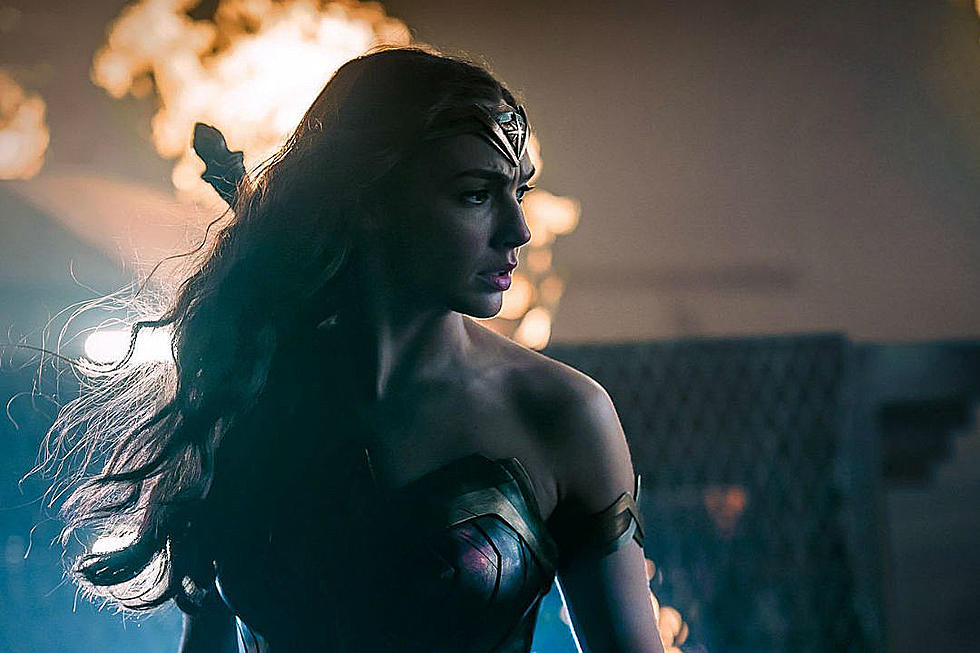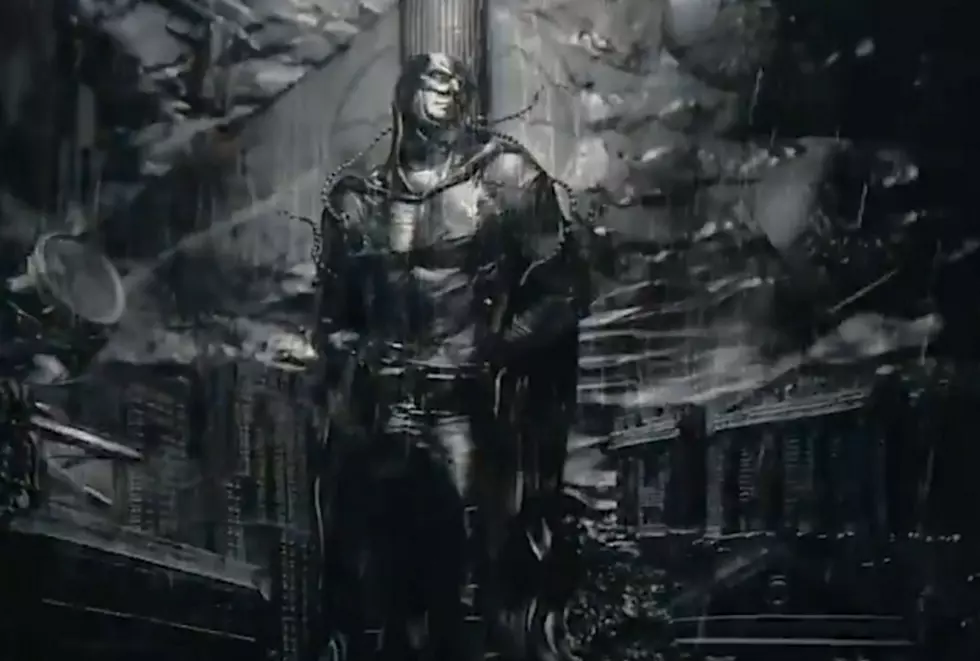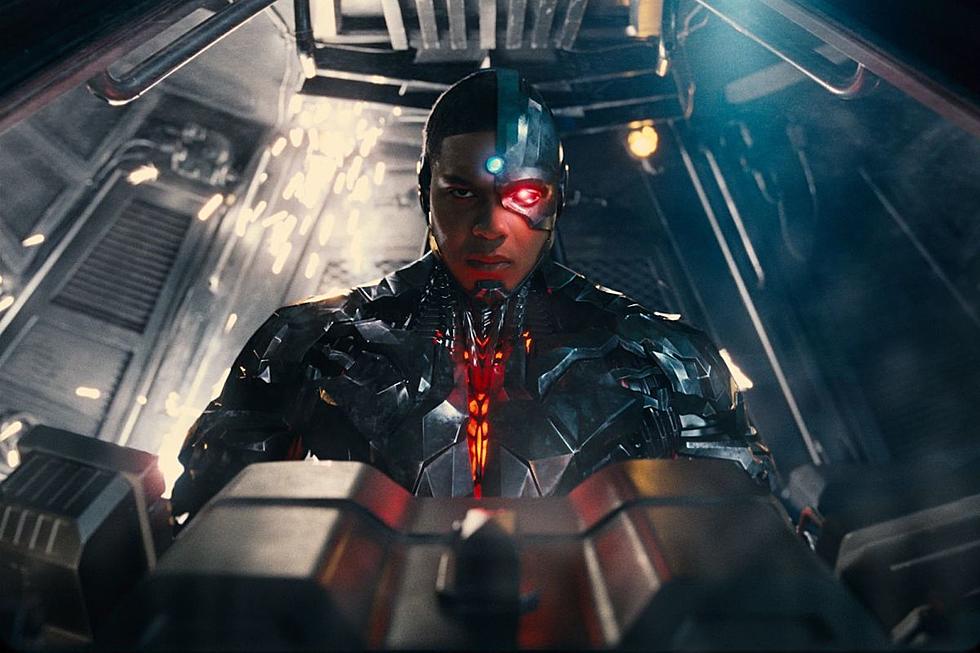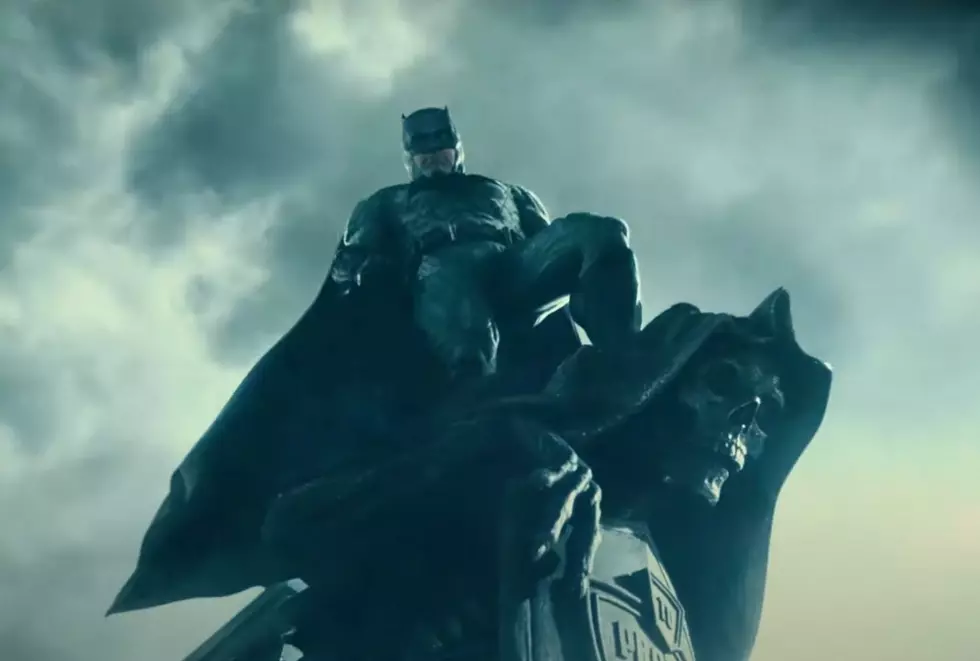![That Mad Rush: Digging Deep Into ‘The Multiversity’ With Grant Morrison [Interview]](http://townsquare.media/site/622/files/2015/01/featured-10-11.jpg?w=980&q=75)
That Mad Rush: Digging Deep Into ‘The Multiversity’ With Grant Morrison [Interview]
This week saw the release of the Multiversity Guidebook, a sort of map for a series of one-shot stories that has inspired a lot of contemplation, examination and confusion among comic fans.
To offer an even deeper look into the universe-spanning series and its meaning, ComicsAlliance spoke with writer Grant Morrison about everything we could manage in half an hour: where the idea for The Gentry comes from, Morrison's commentary on Watchmen in Pax Americana, the idea of dangerous knowledge, how these seemingly standalone stories tie together, and just how this sprawling project will wrap up.
Comics Alliance: We had talked about Multiversity a little bit at Comic Con, and things have crystallized a lot more now that five issues of the series are out. One thing I've seen a lot of people talk about in having read these five issues is that you kind of threw us into the deep end on this thing. The latest book to come out is the Guidebook, which one would suspect is going to give a little additional clarity to the series.
Why did you decide that the Guidebook was the sixth installment? Why throw us into the deep end right at the beginning?
Grant Morrison: Well basically, honestly, everything is based on my first experience with superhero comics. One of things I remember picking up was the Justice League #45 -- I think it's 45 -- and that the Justice League is fighting Antimatter Man. It's a team-up with the Justice League and Justice Society.
I had never seen Justice Society in my life, you know, but suddenly there are all these fabulous characters, Dr. Fate, Star Man. All these beautiful designs I've never seen before and I knew nothing about them, but just reading that comic with absolutely... as you say, thrown into the deep end of the super hero universe. I was utterly captivated. And pretty much every comic I've loved has been like that.
I think people come to comics and they never come with a guidebook unless, they're more prepared than we are and they've already studied the whole thing. Most people discover comics, you know, someone lends you a book and you really get involved in it, and you really like it. Or you find one or pick one up just on the off chance and get involved, you know.
It's the same as when I got into the X-Men. I came in right in the middle of what Chris Claremont and John Byrne were doing. I was so utterly blown away by it that I had to find more. So I guess all my work is trying to recreate that feeling of almost chaotic immersion in something that's much bigger than you and has been around for a long time and just leaves you excited and filled with tension
Based on that, you know, as you say, I like throwing people in and letting them sink or swim, because I think most people who read comics, if you enjoy them at all, then you'll like it, and you'll start swimming. That's why the guidebook comes later. I do want to explain all that stuff, and I do want to systematize a lot of these things, but at the same time, I just want to create that mad rush of just discovering comic book universes for the first time, to just throw in and learn who the characters are. Being able to go online as you do nowadays and check on things makes a lot easier than when I was a kid trying to figure out who the hell Dr. Fate was.
So it's really about that, you know. I just want to create the experience. That mad, crazy, rush of discovering all these characters. The guidebook comes in halfway through so that if you're really getting too exhausted, then you get an explanation of pretty much everything.
CA: There are little bits and pieces throughout these issues of Multiversity -- particularly in New Thunderworld Adventures -- clues as to what some of the universes we're not seeing in an entire issue are. Take for example Luchador Dr Sivana, who I'm extremely curious about. I'd love to read more about him. Is the idea of putting those little seeds in these issues kind of a way to, maybe open the door for more creative teams or writers to pick up the baton on some of these universes you're not exploring in depth in particular issues and run with them?
GM: Oh, yeah. Again, that's one of the things about these ongoing, long-running universes of DC and Marvel, particularly DC, because it's my favorite. To me, that's what it's all about. You pick up a little piece of something, you know, pick up a little piece of a Gardner Fox story and turn it into a brilliant Green Lantern short or what Geoff Johns does when he finds an obscure character [and flesh him or her out], because all these things are left lying about, and the great thing about superhero universes is they don't really end, and the story never really ends.
It's always a crisis, and again, that's a lot of what Multiversity is ultimately about. It's the fact that there is no end to these stories, and that's what makes them great to a certain extent and we can throw in a character or a hero or a villain that's only in a few panels but may inspire another creator to create an award winning six-issue mini-series or whatever. So, it's very much that. It's what I love about them, is the open-ended nature and the sprawling kind of epic, no-horizon nature of these stories.
CA: The issue in Multiversity that has maybe generated the most discussion is Pax Americana, so let's talk about it. There's a scene in there where Captain Atom is looking at his dog and trying to figure it out, and in the process of such, takes the dog apart and realizes that he's killed him.
There's a certain reading of that which you can take to mean that deconstructing something that you like is ultimately destructive. Is that the point you're trying to make there? Trying to dissect a comic like this too much takes away some of the enjoyment?
GM: Yeah, but you'll notice I did it in a comic that was deliberately designed to be dissected [laughs].
It's very much drawing attention to that. The techniques in there are so in-your-face. It was really gratifying to see the amount of effort people put into working out stuff in Pax. I really appreciated that.
But at the same time, I attempt to do that with pretty much everything I write. I don't telegraph it as much. The final year of Batman Incorporated was as tight, controlled and as wound around its seams as Pax, but I didn't signal every way I was doing it. With Pax, I signaled it so I was forcing people to dissect, and then I confronted them with the dog scene.
I'm one of the people that loves to dissect stuff. I love to get into the meanings. I love breaking it down. But I'm sure you're like me. We all know those moments when we're sitting with friends, and we're really enthusiastic about something we all love, and we keep wanting to talk about it. We keep wanting to get further and deeper, and there comes a moment where you go, all we're left with is the pieces here [laughs]. It doesn't seem very palatable anymore. I think there's an inescapable thing when you do dissect something down, the dissection is always done from a point of enthusiasm and excitement or a need to engage with something a lot more. What you're doing in a lot of cases is ending up with something dead in your hands.
As I said, I'm not doing this as a moralist. I'm just pointing out that this happens. I'm pointing this out in a comic where a comic critic is the main character, in the form of Nix Uotan. It's just making a point, but not necessarily so people should stop doing this, because I can't stop doing it. I'm sure there are people who like things -- they like TV shows, they like comics, they like books -- who'll continue to do it, but there is the horrible fact that at the end, we're usually left with something dead and stuck in a museum case and no longer giving off the same vibe of life and excitement and potential that it did when you first picked it up.
CA: It's impossible to ignore the similarities, structurally and in the characters and everything else, between Pax Americana and Watchmen. I know that you've written previously about your take on Watchmen in Supergods, where you wrote -- and forgive me if I'm putting words in your mouth -- that you saw it as an exercise in form, maybe as a little too confined by that form. How did that play into Pax Americana, and particularly the notion that life is comics?
GM: Where to start? [laughs]
It's meant to be like Watchmen in the way that the The Rutles are like The Beatles. There's no sidestepping it. That's what it's about. It's about Watchmen. It's about that type of storytelling. It's about the very tight, closed, controlled universe that's created for something like Watchmen. All the tricks we use with design make you feel quite pressurized and enclosed.
I think some of the things that people missed -- I read a lot what people think about how the president's a good guy, hunting for the hero in this story -- but there are no heroes in Pax Americana. The president is a delusional murderer who killed his father, although quite inadvertently, and now he wants to commit suicide. Most of the superheroes have got serious problems of their own. So one thing people shouldn't imagine is that there was a good guy in Pax, and the president's plan might lead to anything other than disaster.
That's one of the things I took from Watchmen, is the sense that there is no moral sense, except in Watchmen there's a moral sense of the slightly repugnant, yet lovable Rorschach. We didn't even want that much of a moral sense. I wanted it to be more like the real world. It seems like the real world, but when you actually look at it, you realize that the Gentry characters, the bad characters, might have trouble penetrating this world, although it seems like that world has a lot of problems.
In actual fact, it's super-tight. That's what the president intuits when he has his moment of revelation. It's the structure of the comic book universe that he's in, which is controlled by eight-panel grids. He's actually realizing that he's inside something that is structured and is crystallized, and it does have reasons and meanings, but he doesn't necessarily know what the reasons and meanings are, because he's slightly deranged.
It was very much about what was it like to be trapped in a story with you're utterly under the control of the author, and every single thing you do has to tie into a grid, and how that may reflect on the inhabitants of that universe. So Watchmen was a very useful tool to then go back and use that on the characters which were part of the original inspiration for Watchmen. It just seemed funny to put them in a Watchmen-style story.
The fact is, with Pax I kind of figured out an entire season of stuff that no one will ever see. So it was all there. As a critique of Watchmen, I think the critique is there was well. The narrative techniques and the formal devices are so in-your-face it's practically like setting off fireworks, isn't it? It's almost an affront to critics, I would think, because it's so in-your-face. But I guess that also makes it easier to pick at.
One of my critiques of Watchmen is that I feel that the formulaic devices, while they fascinate me, and they do fascinate me because they're so perfectly deployed. There's not a line out of place in it. But in the service of trying to talk about reality, I don't think reality is like that. As the president himself says when they're walking through the gardens of Captain Atom, "These gardens are a masterpiece of design and organization. Life, by contrast, seems a puzzle, a maze of contradictions."
To try and suggest real life by using intense formulas is, to me, a kind of dead end. So, if there's a critique at all, that's the critique. But otherwise, I also want to honor Watchmen, which is an amazing artistic achievement, by doing something that's at least trying as hard as Watchmen to pack the panels with meaning and connection.
CA: One of the thematic elements that goes throughout Multiversity is what you might call the destructive nature of knowledge. You talk about President Harley being deranged. Nix Uotan gets a certain degree of knowledge and becomes a monster because of it. Captain Atom just leaves the universe when he reads Ultra Comics. Algorithm 8 is something that exists. It's almost this Lovecraftian idea that the knowledge of your existence drives you mad.
GM: Slightly, yeah. I think the main idea in Multiversity, what I wanted to talk about and what all the books are about, but particular the Ultra Comics issue and the final issue, is quite simply: Be careful what you let into your head.
In a world where everything is protected -- people live in houses with locked doors, they put their valuables in safes, they keep their information safe behind passwords and antiviral controls -- we allow pretty much anything into our heads. Particularly since the Internet age has really got its teeth in and we're starting to see some of the effects it's having on people.
I think, to some extent, that's a glut of information and a tide of information that's almost too much for people to take. It has resulted in a kind of sickness in people, exhaustion or resignation. So, ultimately Multiversity is about that, because I like to write stories about stuff that I'm seeing in the world around me, or the stuff I'm feeling. It's about, are you sure you should be letting all this stuff into your head? How do you honestly feel about all the porn and all the things you see, all the beheadings? What's it doing in there?
The Gentry kind of represent all those things that we just accept. To me, the result I'm actually seeing is a kind of soul weariness, a cynicism, a sickness that permeates culture. I think we're all fed up with ourselves and we're just waiting to be destroyed by the other.
CA: You've mentioned the Gentry a few times and we saw them in their clearest form in the first issue, Multiversity #1, where they announced themselves. Since then, they've only shown up in ways you sort of have to just guess that they're there. With that in mind, and given that we've got a handful of issues left before this wraps up, it's sort of hard for me to wrap my head around the notion that all of this can be tied up in a bow in one, big wrap-up issue.
GM: That's how I feel every time. [laughs]
CA: How much of a challenge was that to put together, first of all, and is the ending we're going to be more of a symbolic ending? Or do you really expect the ending to be more of a concrete, "Here's what happens with the Hall of Heroes and Nix Uotan, and here's what happened in all these universes"?
GM: Pretty much. We don't get into all the universes. You certainly get, "Here's what happened." All the main characters that have been introduced so far, with Red Racer and all those people from the first issue, all get their moments and get their stories taken to the conclusion.
So yeah, it's there. There are kind of three endings, and the final ending is probably one of the most concrete things about the whole series. It becomes very down-to-earth and very street-level on the last page. I do want to make it work on that level. Most of these things, they do work on that level. I think they always do. As these things are coming out, it's just the shock of the new that seems to freak people out.
Final Crisis has suddenly become a book everyone can understand. There were people who were forming camps to fight about it. I think people tend to approach my work thinking it's lot more complex than it is, but most of it's on the page, and most of it's an attempt to talk to other comics readers about the stuff we're into. Particularly these superhero comics, they're quite hermetic in that sense, in that there are so many other comic writers and so many other people who read comics get excited by them, criticize them or critique them.
At the same time, I'm trying to talk about real things. That's where the symbolic content comes in, where the Gentry represent all these bad influences, but really each one of the Gentry is kind of a villain archetype taken to the limit. Intellectron is the mastermind taken to the limit. Dame Merciless is the femme fatale taken to the demonic limit. Demogorgunn is the zombie horde taken to the limit, and so on through the rest of them. Lord Broken is the madhouse, Arkham Asylum taken it to the limit. Each of them represents a fairly understandable villain type once you think about it.
So the symbolism becomes, well what do they represent in the real world? For me, they represent forces of nihilism and anti-human hatred, ignorance and greed and stupidity that I see every day. Those aspects of the story, how do you deal with those? How do you communicate those? What happens when there are too many of them in your head and you're starting to feel sick with it? That's the symbolic element in the comic, but at the same time I still have to show what happens with Red Racer's affair with Flashlight [laughs]. I still have to show what happens to President Superman at the end and make sure everyone gets returned to their homes and all the crises are brought to an end satisfactorily.
CA: The term "The Gentry," between myself and my friends and then other people who over-analyze this stuff sometimes, we've talked about the term and where that could come from and what that can mean. A lot of times those conversations come back to the idea of gentrification.
GM: Yeah, absolutely.
CA: This idea of a force or a group of people coming into a community and then changing it. Is that part of the idea? That there's this evil faction that seemingly comes from genres outside superheroes and are invading these comic universes?
GM: The great thing about broad symbols like this is you can interpret them in different ways. For me, the name The Gentry initially came from -- it was one of those words that people used to use in order to not to talk to the seelie people, the other ones, the strange ones from the dome. Back in the day, they had all these names, the good people or whatever, the "tripping darlings." All these strange epithets that people would use rather than mention the seelie by name.
The Gentry was one of those names and it just stuck with me when I was thinking about beings from beyond, and we used to call them The Gentry. Then I thought of them as being bad things from beyond. From that, they started to grow, and then as you said, this idea of gentrification. When I'm talking to you about the kind of ideas we let into our heads, and taken as a thesis of, what if we let in so many shitty, shoddy ideas that we have completely ruined the neighborhood in there? We've dismantled, we've wrecked our inner houses and we've destroyed our inner palaces, and we've placed crackhouses in there, imaginatively.
I don't necessarily believe that this is all true. I thought it would make an interesting idea for a story, so the Gentry then are these bad ideas that come in you when you've messed up your head [laughs], so they come in and start rebuilding because you've now made it comfortable for them to recreate and build in their own image. So that, again, that's one of the big things it's about, this notion of gentrification coming into places and places that have been seemingly broken down and left to ruin and then rebuilding for them the benefit of your own kind.
CA: I love how you jump around between different genres, but since The Multiversity is one big story, what I'd like to know is, in a few months, when this thing is completely finished, and we've read it all, are we going to go back into some of these issues that seem to be self-contained stories and a light bulb is going to go on where we see how it all connected?
GM: I hope so. I hope the presence of The Gentry will be more clear. For instance, in the Captain Marvel comic we have dozens and dozens of Sivanas, so they can represent Demogorgunn, as they always appear as some kind of horde. Or Demogorgunn could be the zombies in issue #2 or the Superman robots in issue #3. Because they're demons, they come in different forms in each world, so I do hope when it's finished, yeah, you should be able to look back and find a lot of new stuff and hopefully, that's way it's been built.
Even to notice that certain things, like the Thunderworld comic that seems quite sweet and light isn't, actually. [laughs] There's a lot going on, a lot of weird things going on under the surface of how the characters are presented and portrayed. I think it'll make it slightly more interesting to go back when we've seen everything.
CA: In the issue The Just, there's the painting of "the creepy lady." That seems like the most obvious Gentry appearance to me. But there's also all these other things to chew on, like the number eight appearing so much.
GM: There's this idea of octaves and music, because of DC's Multiverse, at least, is based on vibrations and tones, and it seems like an interesting thing to do, to base everything around a Western musical scale.
CA: There's a pretty clear tie to Final Crisis in issue #1, with Superman singing or playing a song to save the universe.
GM: A lot of people just thought, where the hell did this come from? To me, I think this is the prime basis of the DC Universe, that it's made of vibrations, so if you want to change anything then you have to change it with a simple song. Most people thought it was insane when Superman sings and saves the day, but for me, it came from the very root of how the DC Universe is.
More From ComicsAlliance









